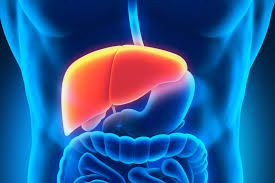2024's Pain Relief Breakthrough: What You Need to Know

Introduction
In 2024, the world of pain relief is seeing some amazing advancements, marking a new era in pain management. Effective pain management is incredibly important as it greatly improves the quality of life for people dealing with chronic and acute pain conditions. Recent breakthroughs are leading to new therapies that promise not only effectiveness but also safety.
Some key developments include:
- Suzetrigine: An oral selective NaV1.8 inhibitor showing potential in treating diabetic peripheral neuropathy.
- Methotrexate: Emerging research highlights its effectiveness in knee osteoarthritis pain relief.
- Non-addictive Painkillers: Novel alternatives to opioids are being developed to mitigate addiction risks.
These breakthroughs signify a shift towards safer, more effective treatments, offering hope for improved patient outcomes.
Breakthroughs in Pain Relief Medications
2024 has ushered in a new era for pain relief with advancements that promise to revolutionise treatment options for various pain conditions. Among the many innovations, suzetrigine stands out as a significant breakthrough in pain relief medications. Known as a NaV1.8 inhibitor, suzetrigine shows potential in treating diabetic peripheral neuropathy (DPN), an area where effective solutions have been limited. Developed by Vertex Pharmaceuticals, suzetrigine has received the FDA's Breakthrough Therapy designation, paving the way for its Phase 3 program scheduled for later this year. The success of Phase 2 trials in addressing both acute and neuropathic pain further underscores its potential as a breakthrough pain medication.
Methotrexate's Role in Osteoarthritis
While traditionally used for autoimmune diseases, methotrexate is emerging as a promising candidate in osteoarthritis treatment. Recent research from the University of Leeds highlights its effectiveness in relieving knee osteoarthritis symptoms such as pain and stiffness. This insight into methotrexate's ability to alleviate atopic pain marks it as a promising development in breakthrough pain relief. Future research aims to refine its application for osteoarthritis patients, potentially transforming how this widespread condition is managed.
Novel Non-Addictive Painkillers
The quest for non-addictive alternatives to opioids is gaining momentum with researchers at LSU Health developing innovative solutions. These novel non-addictive painkillers offer effective management of chronic and acute pain without the addiction risks associated with traditional opioids. This development is crucial in addressing the opioid crisis while providing patients with safe and efficient options for pain relief.
In addition to these pharmaceutical advancements, there are also natural remedies that can provide effective pain relief without the side effects associated with conventional medications. For instance, products like those offered by 1936 Original utilise natural ingredients sourced from the EU, which can help relieve back, joint, muscle pain and reduce inflammation.
These advancements collectively represent a significant shift towards more effective and safer pain management strategies. The focus on innovative therapies and patient outcomes continues to drive breakthroughs in the field of pain relief medications, promising brighter prospects for those battling various pain conditions.
Addressing Chronic Pain Conditions: A Comprehensive Approach
Understanding Complex Regional Pain Syndrome (CRPS)
Complex Regional Pain Syndrome (CRPS) represents a significant challenge within the realm of chronic pain conditions. Characterised by severe, persistent pain often following an injury, CRPS can severely impact a patient's quality of life. The importance of early detection cannot be overstated; timely diagnosis is crucial to prevent the condition from progressing. Early intervention can significantly alter the trajectory of CRPS, reducing the severity and duration of symptoms.
Exploring Comprehensive Treatment Approaches
Successfully managing CRPS necessitates a multi-faceted treatment strategy encompassing various therapeutic dimensions:
- Education: Empowering patients with knowledge about CRPS is foundational. Understanding the nature of the disorder, potential triggers, and management strategies enables individuals to actively participate in their recovery process.
- Rehabilitation: Physical rehabilitation plays a pivotal role in CRPS treatment. Tailored physiotherapy programs aim to restore function and mobility while mitigating pain levels. Therapeutic exercises and activities are designed to gradually increase movement and reduce stiffness.
- Psychological Support: Chronic pain conditions like CRPS often lead to emotional distress. Integrating psychological support within treatment plans addresses mental health challenges, providing coping mechanisms for anxiety, depression, or stress that may accompany chronic pain.
The combined approach not only focuses on alleviating physical symptoms but also considers the psychological well-being of patients, fostering a holistic recovery environment. By addressing both physical and emotional aspects, this comprehensive strategy enhances patient outcomes and improves long-term prognosis.
Transitioning Towards Future Solutions
Research into effective treatment strategies for chronic pain conditions continues to evolve, demonstrating a commitment to advancing patient care standards. With ongoing studies and trials exploring innovative therapies, the landscape of chronic pain management is poised for transformative changes in 2024 and beyond.
Future Directions in Pain Relief Research
The field of pain relief research is constantly evolving, with many ongoing clinical trials seeking to redefine treatment methods. One such significant trial is the Phase 3 study for suzetrigine, which focuses on its effectiveness in treating diabetic peripheral neuropathy. This trial marks an important step forward in understanding the role of NaV1.8 inhibitors and has the potential to revolutionise the management of neuropathic pain.
The Shift Towards Personalised Pain Management
In addition to traditional approaches, there is a growing focus on personalised pain management. Researchers are now looking at genetic, environmental, and lifestyle factors to develop treatments that are specifically tailored to each individual's needs. This shift has the potential to improve effectiveness and minimise side effects, providing a more targeted approach to pain relief.
Key areas under investigation include:
- The development of non-addictive analgesics that mitigate opioid dependency risks.
- Exploring the roles of biomarkers and genetic profiling in predicting treatment responses.
- Innovative methods like neuromodulation techniques, which are being refined through rigorous testing.
These advancements highlight the commitment to relieving pain precisely and safely. As these studies continue, they have the potential to uncover new possibilities in pain management, aligning with the broader goal of achieving effective and personalised care solutions by 2024.
Conclusion: Embracing Innovations for a Pain-Free Future
The future of pain relief treatments depends on ongoing research and innovative breakthroughs. The advancements seen in 2024 highlight the importance of these efforts, offering hope for more effective and safer pain management solutions. Staying informed about these developments is crucial. By being proactive, you can advocate for treatments that align with these cutting-edge innovations in pain management. Engaging in this dialogue ensures that both individuals and healthcare providers are equipped to make informed decisions, paving the way for a pain-free future.
FAQs
What are the major breakthroughs in pain relief medications in 2024?
In 2024, there have been significant advancements in pain relief medications, marking a new era in treatment options. These breakthroughs include the development of novel non-addictive painkillers and improved formulations of existing medications that enhance efficacy while minimising side effects.
How is methotrexate being used for osteoarthritis in 2024?
Traditionally used for autoimmune diseases, methotrexate is now being explored for its potential benefits in treating osteoarthritis. Research indicates that it may help reduce inflammation and improve joint function in patients suffering from this chronic condition.
What alternatives to opioids are being developed for pain management?
The quest for non-addictive alternatives to opioids is gaining momentum in 2024. Researchers are focusing on innovative compounds and therapies that provide effective pain relief without the risk of addiction, aiming to address the growing opioid crisis.
What is Complex Regional Pain Syndrome (CRPS) and how is it treated?
Complex Regional Pain Syndrome (CRPS) is a significant chronic pain condition characterised by severe pain, swelling, and changes in skin colour and temperature. Successful management requires a multi-faceted treatment approach, including medication, physical therapy, and psychological support.
What does the future hold for pain relief research?
The field of pain relief research is continuously evolving, with ongoing investigations into effective treatment strategies for chronic pain conditions. Future directions include personalised pain management approaches that cater to individual patient needs and preferences.
How is personalised pain management changing the landscape of treatment?
There is a growing focus on personalised pain management strategies that take into account the unique characteristics of each patient. This shift aims to optimise treatment outcomes by tailoring interventions based on individual responses to therapies and specific pain profiles.












